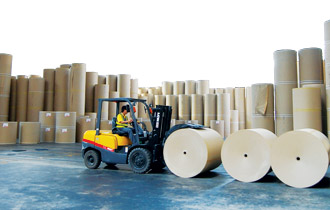HOW TO TAP INTO THE POTENTIAL YET UNKNOWN LAND – RURAL VIETNAM REVEALING 4 MYTH BUSTERS
Market News
Accounting for 68 percent of country’s 90 million people, rural consumers are evolving in leaps and bounds. As the nation’s growth continues and FMCG outlook progresses, there is increasing interest from both local and multinational businesses around Vietnam’s rural consumers. With its huge population and increasing affluence, rural Vietnam is, in fact, lucrative market as these consumers are enjoying income growth.
Yet, this high-potential group largely remains unknown and has been long thought to pose great challenges to businesses. Those barriers are highly related to the myths as to whether rural consumers are less connected consumers, they are likely to keen on affordable products and pushing products to these far lungs is expensive and costly. According to a recent Nielsen Rural Mythbusters thought leadership study to test the previously stated myths about rural Vietnam, reaching rural land and engaging rural consumers is not like finding a needle in haystack.
MYTH 1: ARE RURAL CONSUMERS LESS CONNECTED THAN URBAN COUNTERPARTS?
Urbanization subsequently brings rural consumers closer to their counterparts who are living in towns and big cities, making them also living in diversified media world. When it comes to identifying their digital consuming behaviors and key channels to reach them, television remains key while social media is evolving noticeably. Television reach in rural communities is at saturation point, with more than 90 percent owning a television at home and 57 percent among them connecting to more than 10 television channels. According to Nielsen Rural Mythbuster study, 90 percent of the rural consumers own a mobile phone; meanwhile, 50 percent of them own a smartphone.
While internet penetration remains relatively low, internet and digital platforms usage is on the rise among these consumers. According to the report, there is nearly 24 million people in rural areas using Internet, which is on bar with their counterparts living in metropolitan places. Social media emerges as one of the key platforms for obtaining the information, entertaining and keeping in touch with relatives, friends and children when 22.5 million Facebook users living in rural compared to 23.5 million Facebook users coming from urban areas.
Mr. Nguyen Anh Dzung – Director – Head of Retail Measurement Services – Nielsen Vietnam observes “As a result of being exposed more to media channels, there are a number of common themes emerged in relation to their attitudes and behaviors. These include progressing from selfrestraint and self-sacrifice to stability-orientation and even uplifting to the growth mindset of wealth-orientation and kids’ future. Therefore, what’s happening in urban is happing in rural. Besides, they are getting more and more borderless in physical connection and mindset with their counterparts in urban.”
MYTH 2: ARE RURAL CONSUMERS ONLY KEEN ON CONSUMING LOW-PRICED PRODUCTS?
Rural has been constantly grown as a new source of growth for many manufacturers during the past years. In fact, in first quarter of 2017, rural grew at 12.4 percent, contributing 51 percent to total FMCG sales nationwide while urban only gained 6.5 percent. More importantly, the pick-up from both urban and rural areas was mostly driven by volume increase. When taking a deep dive into each price segment to see where the growth actually comes from, mainstream and premium are the two key contributions to the growth of FMCG in rural, nearly 40 percent and 38.5 percent respectively.
“Apparently, there are opportunities abound for products which appear appealing to consumers’ aspirations and uplifting life goals as consumer off-take for mass and premium products are observed to be significantly higher than other segments” Mr. Dzung adds. “Surprisingly, up-trading is not just a desire, but in action. Thus, if manufacturers just focus on pushing the mainstream products to these far lungs, they are missing huge lucrative opportunities.”
MYTH 3: WE HAVE LESS CHANCE TO PUSH NEW PRODUCTS IN RURAL?
Correlated with rural consumers’ aspirational outlook and fascination with urban lifestyles, they show a thirst for new products – 77 percent wants to try new products and 95 percent appreciates having a wide range of products to choose. Subsequently, these insights lead to the point whereby new launches in rural perform better than those in 6 key cities within a store, proven in 25 out of 27 categories. But with a highly diversified retail sector, ensuring products reachable and available are instrumental and critical elements for success.
MYTH 4: REACHING THESE FAR LUNGS IS TOO COSTLY AND RESOURCE CONSUMING
Traditional trade, a complex and highly competitive channel, comprising more than 1.1 million individual outlets spreading across 58 provinces in Vietnam is here to stay for the foreseeable future. Getting your products to each and every retailer to expand your distribution to drive more sales has long thought be to a challenging game for manufacturers.
“When talking with multinational businesses, “Where to focus” is a common question because the reality for most manufacturers servicing half of the 1.1 million outlets is not realistic. Even large manufacturers with extensive sales teams and great resources only service approximately 30% of outlets directly” Mr. Dzung says. “If you don’t know where your target is located, how would you fire an arrow and expect to hit the bullseye?”
However, according to Nielsen study, if businesses target 400,000 stores in top districts, those stores are highly likely to contribute up to 39 percent of the retail sales. Given this result, through proper targeting, reaching the majority of sales is feasible and is not as expensive and resource consuming as you might think. Therefore, stores segmentation or “where to focus” is what businesses are suggested to going after whenever thinking of expanding to this new potential market.
“As the rural Vietnamese community continues to evolve, transform and takes centre stage as a key group for businesses, understanding who they really are, where, how and what they are buying and their most effective touch points will be prerequisites for future success” Mr. Dzung emphasizes.
# TAG
0 bình luận
Viết bình luận
tin liên quan
Tin mới nhất
THÔNG BÁO KẾT QUẢ CHƯƠNG TRÌNH "KHAI XUÂN PHÚ QUÝ – LÌ XÌ HẾT Ý 2024"
16-03-2024 | Tin Tức Công Ty
874 Lượt xem
0 bình luận
THÔNG BÁO VỀ VIỆC THAY ĐỔI ĐỊA CHỈ CỦA VĂN PHÒNG ĐẠI DIỆN TẠI TP. HỒ CHÍ MINH
29-12-2023 | Tin Tức Công Ty
1842 Lượt xem
0 bình luận
tin nổi bật
THÔNG BÁO KẾT QUẢ CHƯƠNG TRÌNH "KHAI XUÂN PHÚ QUÝ – LÌ XÌ HẾT Ý 2024"
16-03-2024 | Tin Tức Công Ty
874 Lượt xem
0 bình luận
Thông báo kết quả trúng thưởng chương trình “Hái Lộc Đầu Xuân Năm 2022”
10-03-2022 | Tin Tức Công Ty
2968 Lượt xem
0 bình luận
tin được xem nhiều nhất
Nguyên liệu ngành giấy: Thiếu nhưng vẫn lãng phí
29-11-2010 | Thông tin thị trường
42736 Lượt xem
0 bình luận
tin theo danh mục
- Thông tin thị trường
- Hoạt động xã hội
- Hoạt động công ty
- Hành trình 20 năm
- Tin Tức Công Ty
- Điều khoản sử dụng
TIN TỨC THEO NĂM









